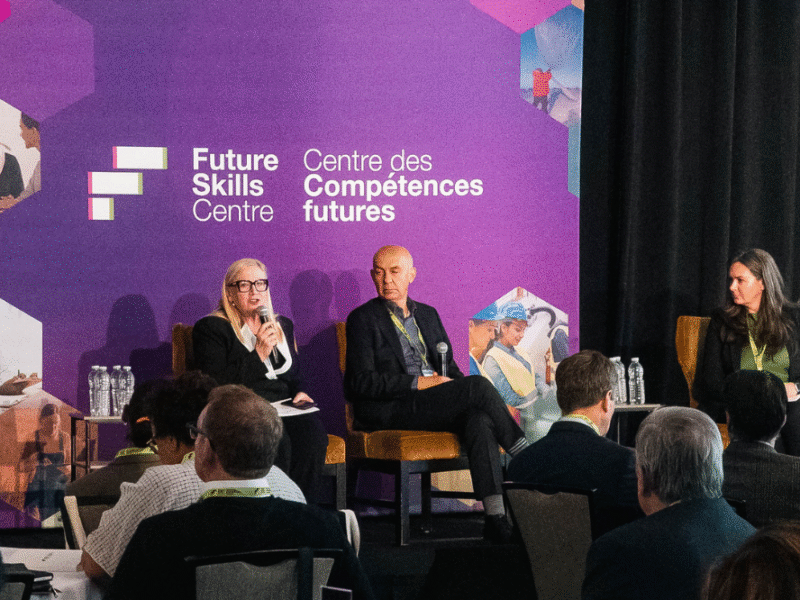Youth Unemployment—Here’s What We Can Do About It

We’re hearing it more and more: young Canadians are starting their careers in a bleak job market. And when you hear the stories, whether from someone fresh out of school applying to dozens of jobs without a response, or a teenager just looking for summer work, your heart breaks a little. These are young people who’ve done everything we’ve asked of them. They’ve gone to school, built their skills and tried to get onto that first rung of the career ladder, but they’re still struggling.
Unfortunately, it’s not just one or two individuals; this is becoming a broader trend, and even youth with college or university training are affected. Youth unemployment is usually higher than that of adults – we saw this even during the tight labour markets after the pandemic. Despite this, the current trends are worth paying attention to: youth unemployment recently reached a nine-year record high. In May, one in five returning students aged 15 to 24 were unemployed—a rate last observed during the 2008 recession, excluding the pandemic. In Ontario, the unemployment rate is rising fastest among males ages 15 to 19. And the average time a young person spends unemployed is growing—up to five months for Ontarians ages 25 to 29, up more than 50% since 2019.
Long-term impacts on young people
Graduating into a weak labour market doesn’t just mean a slow start; it can mean lower wages and fewer opportunities for years to come. We’ve seen this in the research: a 1% increase in the youth unemployment rate in the year someone graduates leads to about a 0.7% decline in earnings, even five years later. It’s called wage scarring. And it’s hard to bounce back from.
These aren’t just numbers—the numbers represent real people feeling discouraged, overlooked and left behind. Prolonged unemployment or underemployment can be a hit to a young person’s confidence, delay independence, and make it harder to build a life.
And honestly, youth underemployment isn’t just a youth problem. It affects all of us. It threatens Canada’s long-term prosperity, equity and competitiveness. If young people can’t get a good start, we all lose out on their energy, innovation and potential.
What’s going on?
Youth unemployment and underemployment have arisen due to a complex mix of factors, and we’re still watching the data to understand what exactly is going on. But here are some of the contributing factors:
- AI and automation are changing entry-level jobs. Some of the roles that used to go to junior staff are being cut or restructured.
- Young people are overrepresented in vulnerable jobs. Retail, hospitality and admin are often the first to get hit in a downturn or tech shift.
These circumstances cause more uncertainty and allow fewer chances to get in the door. And if a young person can’t get that first job, it’s harder for them to move up.
There’s also been talk that immigrants or temporary workers are taking the jobs of young people, similar to false claims that immigrants are responsible for higher housing prices, but the evidence is anecdotal to date. The bigger issue is that we’ve struggled to connect the dots between youth skills, employer needs and real opportunities.
So what can we do?
There’s no quick fix. We need to move beyond short-term fixes and focus on long-term solutions that actually help young people get started (and stay) in the labour market. Here’s what that looks like:
- Make work-integrated learning the norm. Every student should have a chance to get hands-on experience while in school, not just in tech or business but across all fields.
- Support small businesses to hire youth. Make it easier and less risky for small and midsize enterprises to bring in students and new grads through incentives and simplified processes.
- Modernize and extend career guidance. Young people need up-to-date info, personalized support, and access to real people who can help them make sense of a changing job market.
- Invest in the right mix of skills—yes, digital skills, but also social-emotional skills to work with AI, and green skills to support Canada’s transition. Employers play a vital role in building talent through ongoing training and support.
- Build social capital. Many youth, especially those from marginalized communities, lack access to networks that open doors. Let’s invest in programs that connect them with mentors, employers and opportunities.
- Tailor interventions with the right community partners. Indigenous, newcomer and racialized youth all face separate and distinct challenges in navigating the postsecondary system, finding work and advancing in their roles.
We’ve seen these strategies work in programs like ADaPT, NPower, ELITE and Reboot Plus. We know that it takes a set of supports to make training effective. Let’s put that knowledge into action so that young people across Canada benefit from the innovation, testing and evidence we’ve generated. It’s time to scale proven solutions.
Final thoughts
The youth unemployment numbers are high, and yes, they’re worrying. But they’re also a call to action. Young people in this country have done what we asked. They’ve trained, studied and stepped into a world that’s changing faster than ever. We owe it to them, and to ourselves, to respond with the same level of commitment.
It won’t be easy. As we’ve seen, the labour market is complex, and we’re still figuring out where some of these trends are headed. But we do have knowledge. We have evidence. We have examples that work.
It’s hard to thread the needle exactly. But we don’t need to guess, we already know what makes a difference. Now it’s time to double down on what works and design what’s next, with young Canadians at the centre.
The views, thoughts and opinions expressed here are the author’s own and do not necessarily reflect the viewpoint, official policy or position of the Future Skills Centre or any of its staff members or consortium partners.




